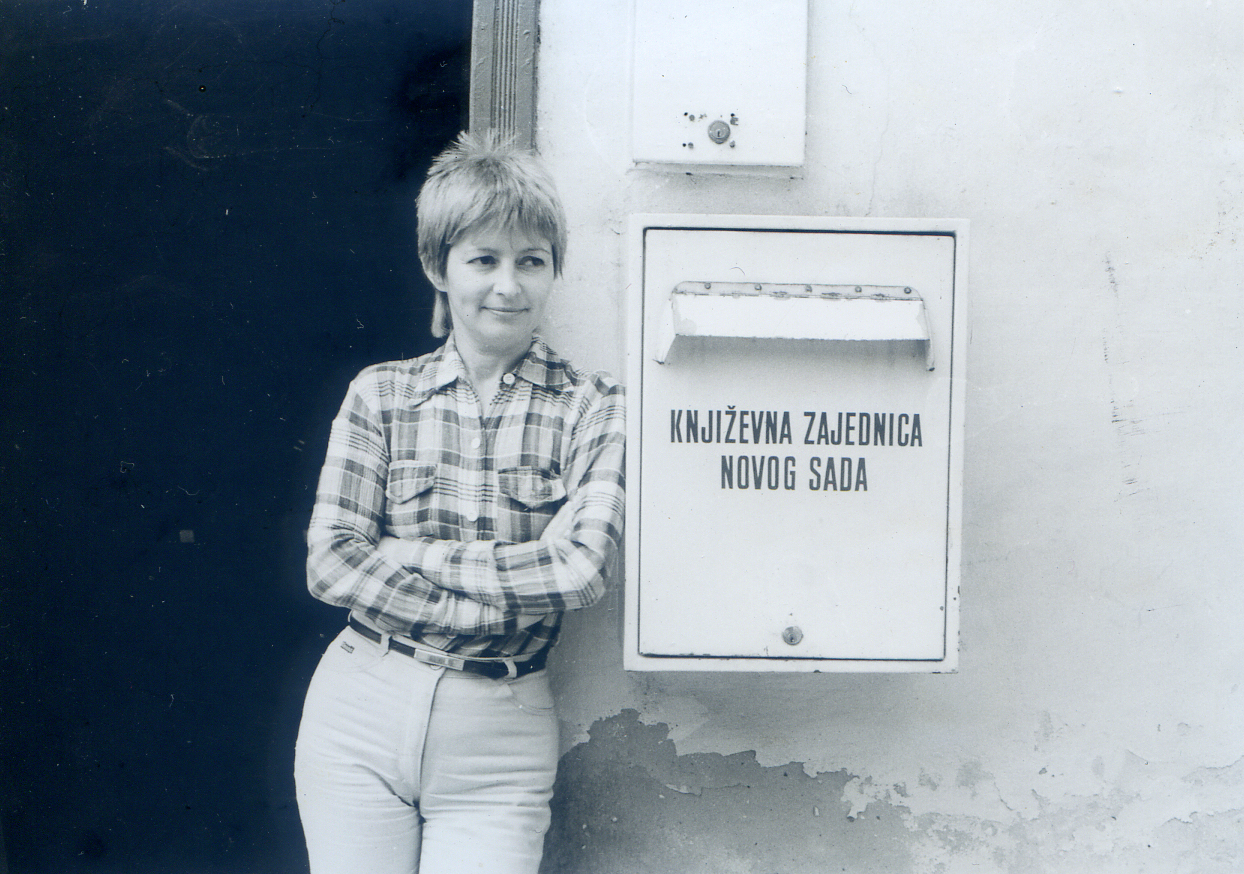→ ESTATE
Judita Šalgo
(1941 – 1996)
Novi Sad, Serbia

THE ESTATE
Judita Šalgo’s legacy consists of visual and video material and art objects. This material has not been systematized or processed. Today, most of the estate is unavailable to the public, and is also largely unknown to the professional and broader audience. Her legacy has no institutional support in Serbia. The main challenge is to collect material/documentation for reconstruction of her performances. That is necessary for future research and exhibition activities and the reactualization of Šalgo’s work in the context of the Yugoslav/European art scene of the 1960s and 70s.
The basis for reconstruction is the texts published in the collection of the author’s experimental texts 67 minuta naglas [67 Minutes Out Loud]. One section of the book includes four “performed texts,” to which Šalgo added the following note: “Performed texts may be derived from poetry (they come from, but are outside of it), but it is important they are written for performance, display. In the absence of a photograph, the text itself is a photo document.” One required strategy for opening up the reception of these texts is translation into English.
The photo material on Šalgo’s activities during the 60s and 70s is the property of her family. Photographs depict her performances, public events at Youth Tribune in Novi Sad, and friendly meetings. The material also includes one short video of a performance of hers. We will connect visual material with texts.
Two art objects used in performances are the property of collector Vladimir Macura. One of the objects is not part of a permanent exhibition but is in the collector’s private space. Macura’s collection at the Macura Museum near Belgrade includes two of Šalgo’s visual works.
Šalgo’s video material is in the archive of Television Vojvodina. It includes one of her performances and one collaborative piece of video art.
Judita Šalgo’s performance and art practice legacy needs the systematization of documentation, precise description, and contextualization. Moreover, extensive research work in private archives is required to resolve more accurately the content of the artist’s estate.

Judita Šalgo (1941, Novi Sad – 1996, Novi Sad) was born Judita Manheim to a Jewish family. At the beginning of the Second World War, her father was taken to a camp in Hungary (killed in 1942), and in 1944 her mother was imprisoned at a camp in Germany. To protect her, her mother hid her in Mali Iđoš (a village near Subotica) with “Aunt Anushka,” a Hungarian woman who looked after her until her mother’s return. After the war and returning to Novi Sad, her mother remarried, and Judita received the surname Šalgo. Her first language was Hungarian, so she learned Serbian when she started school. She earned a degree in world literature in Belgrade in 1966 and returned to Novi Sad. She worked at the Forum publishing house, as an editor at the Youth Tribune of the Cultural Centre of Novi Sad, at Television Novi Sad, at the Nolit bookshop, at the Society of Writers of Vojvodina, and at Matica Srpska. Her frequent change of jobs was necessitated by her unwillingness to make political and creative concessions and compromises. Consistent civil courage and disobedience marked her entire activity in the public space.
Šalgo emerged on the Novi Sad (Yugoslavia) art scene during the 1960s. The centre of New Art practices, political engagement and provocation in Novi Sad was Youth Tribune, edited by Šalgo. After a few years, a series of bans, removals, and even prison sentences led to the demise of critical artistic practices, and Šalgo was fired. She released her experimental texts, published and performed in the late 60s and early 70s, in the collection 67 minuta naglas [67 Minutes Out Loud] (1980). The texts in that collection and the following one, Život na stolu [Life on the Table] (1986), are marked by a specific genre hybridity, interdiscursivity, self-referentiality, and performativity. From the beginning of her work, Šalgo examined the status of female authorship in the context of hegemonic Yugoslav/Balkan patterns of patriarchy. Critically examining the institution of art and complex identity issues, Šalgo realized one of the most radical artistic practices of the Yugoslav experimental art of that period. Šalgo increasingly turned to prose forms in the 80s and crossed her neo-avant-garde poetics with postmodernist discourses. In her prose, Šalgo still explored language and experiments with literary forms, but turned for example to parody of paradigmatic artistic and social constructs. At the base of her prose oeuvre is an intricate network of identity narratives (primarily national and gender) in an epochal setting of conflict. As she explained: “Art is a game in which the stake is not as high as in Russian roulette, but it is significant. Your life may not be at stake, but your identity is. The artist constantly tests, confirms, and denies her identity” (Šalgo, Chronicle 2007, 137). Šalgo was one of the most prominent anti-war authors in the late 80s and early 90s. In her essays, grounded in feminist, postcolonial, neo-Marxist, and postmodernist discourse, she detected and exposed political and social pathologies before and during the dissolution of Yugoslavia.
Judita Šalgo wrote poetry, prose, novels, and essays. She translated from Hungarian and English. She published the poetry collections Obalom [Alongshore] (1962), 67 minuta naglas (1980), and Život na stolu (1986), and the novel Trag kočenja [Skid Marks] (1987). The collection of stories Da li postoji život [Does Life Exist] (1995), the collections of essays Jednokratni eseji [One-Off Essays] (2000) and Hronika [Chronicle] (2007), and the novels Put u Birobidžan[The Road to Birobidzhan] (1997) and Kraj puta [The End of the Road] (2004), were published posthumously. She received the Ljubiša Jocić award in 1981 for poetry and the Miloš Crnjanski award for the novel Trag kočenja.